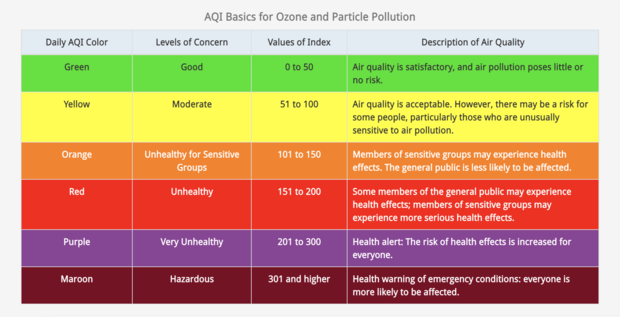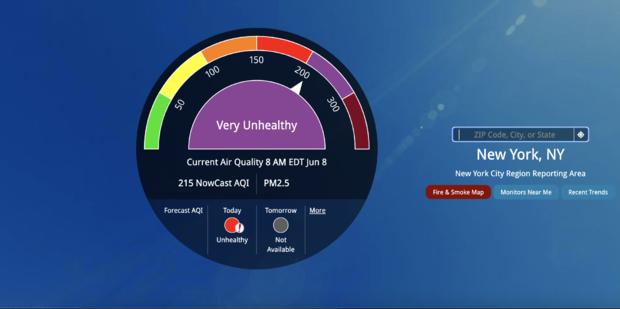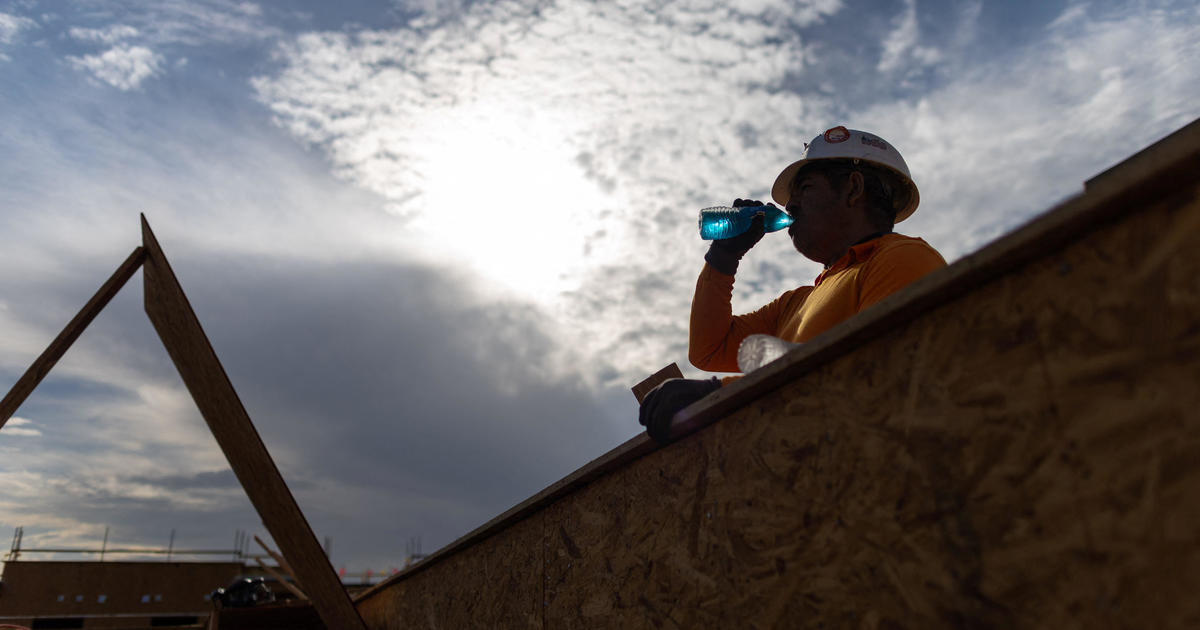What is the Air Quality Index, the tool used to tell just how bad your city's air is?
With a thick haze lingering above the heads of millions of Americans as Canada's wildfires continue to rage, there has been a whirlwind of information about the severity of the situation. But when officials and forecasters classify your city's air as "unhealthy" or "hazardous," what does that really mean?
They're using a federal measurement system called the Air Quality Index.
What is the Air Quality Index?
The Air Quality Index is used nationwide to measure the severity of air pollution and categorize the health risks that are involved with various levels of pollution. The index uses six color-coated categories: good (green), moderate (yellow), unhealthy for sensitive groups (orange), unhealthy (red), very unhealthy (purple) and hazardous (maroon).
The health impacts included in the index are those that people are likely to experience within "a few hours or days" after being exposed to the air, the National Weather Service Says.
How is air quality measured?
The National Weather Service says that the Environmental Protection Agency calculates the Air Quality Index – a value between 0 and 500 – based on five "major pollutants." Those pollutants — ground-level ozone, particulate matter, carbon monoxide, sulfur dioxide and nitrogen dioxide — are all regulated by the Clean Air Act. Of those, ground-level ozone and airborne particles are considered "the greatest threat to human health."
What do the numbers mean?
Each Air Quality Index category, also known as the level of concern, is attached to a certain range of values:
- Good (green): 0 to 50
- Moderate (yellow): 51 to 100
- Unhealthy for sensitive groups (orange): 101 to 150
- Unhealthy (red): 151 to 200
- Very unhealthy (purple): 201 to 300
- Hazardous (marron): 301 and higher
Essentially, the lower the number, the cleaner the air. The only category where air quality is considered "satisfactory" is the one where the index value is no more than 50, although values between 51 and 100 are still considered "acceptable." After that, the air could pose a risk to at least some people, and that risk only becomes greater as the index value rises.
Once the air is deemed "very unhealthy," the general public is at risk of experiencing health impacts, which range from a headache and fatigue to much more serious issues such as heart attack or stroke. At "hazardous" levels, the region is experiencing an air quality emergency. Those with chronic respiratory or cardiovascular conditions are more at risk of developing serious health issues as pollution worsens.
What is the air quality near me?
Air Quality Index values change constantly throughout the day as weather conditions and weather patterns move through the area. AirNow.gov uses the index to provide the latest status for your area. To use the site, enter your zip code and a meter will pop up showing you what the value and color category is for your city, as well as the last time that measurement was updated.
It also tells you what pollutant is causing issues, who is most at risk for health complications and what activities may be safe to do. In New York City, for example, the Thursday morning reading said the AQI for PM2.5, a kind of particulate matter, is 215, meaning "very unhealthy," and that people who have heart or lung disease, those who are elderly, and children and teens should avoid outdoor physical activity. In these conditions, everyone else should avoid "strenuous" and long outdoor activities.






